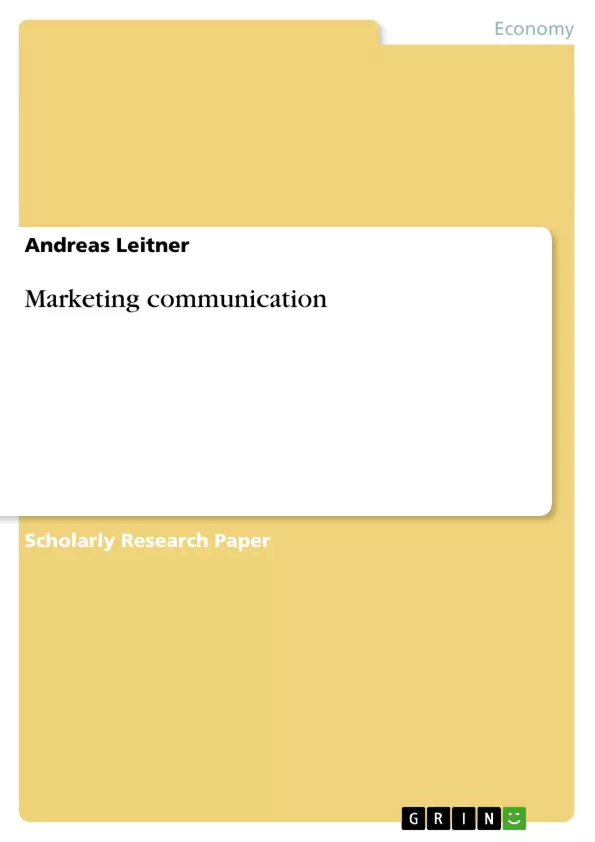In the beginning of this this paper two different communication strategies are discussed. The linear model of communication can be seen as the basic model of mass communication. It consists of seven different components. For a successful communication, the quality of the linkage of theses elements is important, and not the elements it selves. )
The DAGMAR –Model is a model for setting objectives and measures the results. It is a hierarchical model of communication process, and consists of awareness – comprehension – conviction – action.
Furthermore the value of segemtation, targeting and positioning for a successful marketing strategie is discussed. Finally different promotional methodes are discussed based on examples of the ski industry.
Inhaltsverzeichnis (Table of Contents)
- Communication strategies.
- Linear Model of Communication.
- DAGMAR-Model.
- Value of Segmentation and Targeting, and Positioning.
- Segmentation and Targeting.
- Positioning.
- Promotional Methods.
- Advertising.
- Personal Selling.
- Sales promotion.
- Public Relation.
- Sponsorship.
- Trade Fairs and Exhibitions.
- Direct Marketing.
- References.
- Books.
- Biographies.
Zielsetzung und Themenschwerpunkte (Objectives and Key Themes)
This document examines the core principles of marketing communication, analyzing various strategies, methods, and models for effectively conveying marketing messages to target audiences. The text explores the significance of communication in achieving marketing goals and highlights the importance of understanding and utilizing communication strategies to build brand awareness, foster customer engagement, and ultimately drive sales.
- Linear Model of Communication: Analyzing the basic model of mass communication and its components.
- DAGMAR-Model: Exploring a model for achieving advertising objectives through a clear hierarchy of communication effects.
- Segmentation, Targeting, and Positioning: Examining the process of identifying target market segments, tailoring marketing efforts, and establishing a unique brand position.
- Promotional Methods: Delving into various methods of marketing communication, including advertising, personal selling, sales promotion, public relations, sponsorship, trade fairs, and direct marketing.
- Marketing Communication Strategies: Providing a comprehensive framework for understanding and implementing effective communication strategies to achieve marketing goals.
Zusammenfassung der Kapitel (Chapter Summaries)
Communication strategies.
Linear Model of Communication.
This section introduces the fundamental Linear Model of Communication, outlining its seven components: source, encoding, signal, decoding, receiver, feedback, and noise. It emphasizes the importance of strong connections between these components for effective communication. The discussion highlights the model's usefulness in guiding communication strategy by identifying areas for management control (source, encoding, signal) and areas where control is limited (decoding, receiver, feedback, noise). The goal is to create credibility and ensure accurate decoding of the message by the target audience. While acknowledging the passive role assigned to the receiver in the model, it also recognizes the influence of opinion leaders.
DAGMAR-Model.
This section introduces the DAGMAR model, which proposes a hierarchical framework for advertising objectives based on a series of stages: awareness, comprehension, conviction, and action. The model emphasizes the importance of clear communication and understanding of the message to achieve desired advertising outcomes. The effectiveness of the campaign relies on reaching the right people at the right time and at the right cost.
- Quote paper
- DI (FH) Andreas Leitner (Author), 2005, Marketing communication, Munich, GRIN Verlag, https://www.grin.com/document/38562



